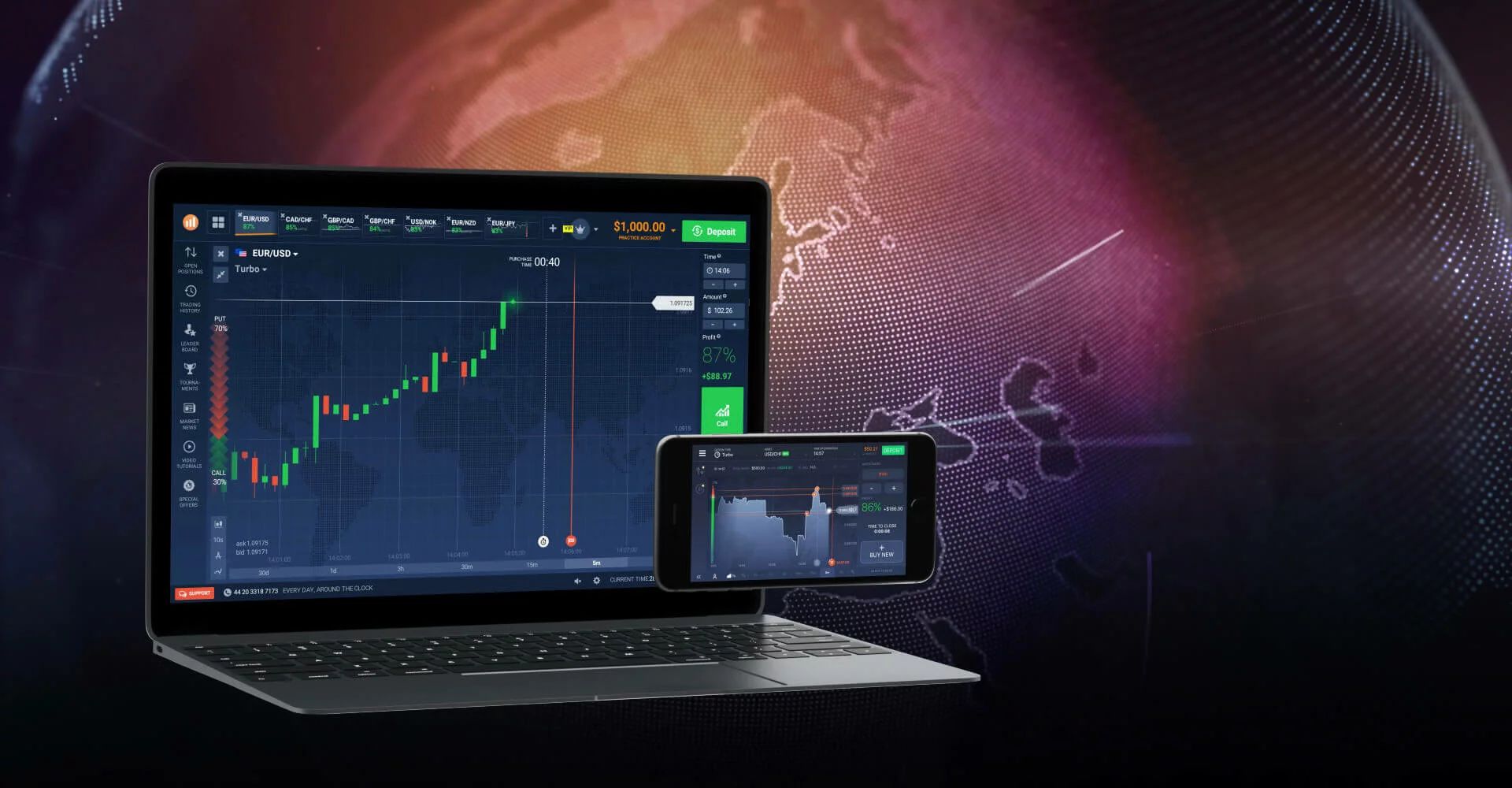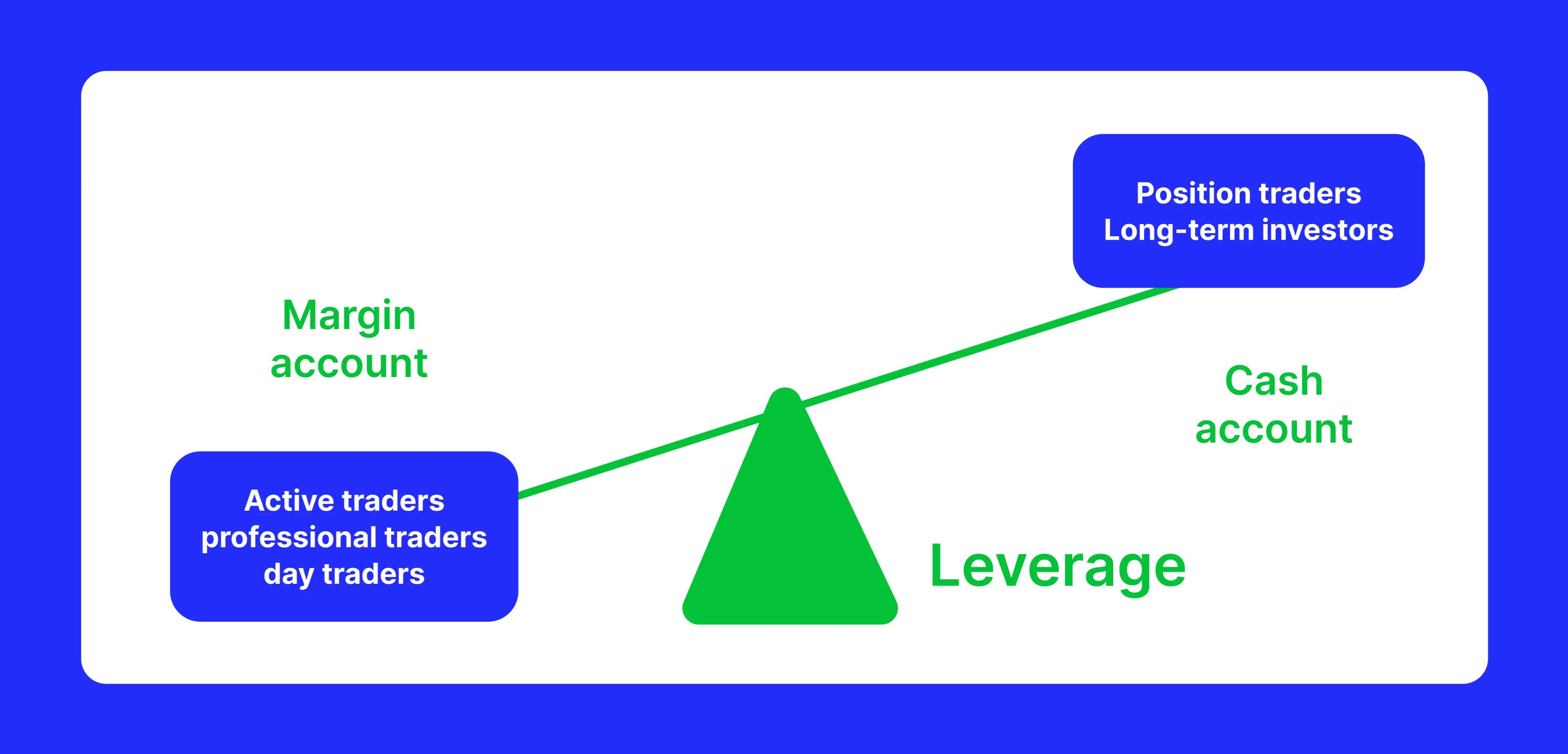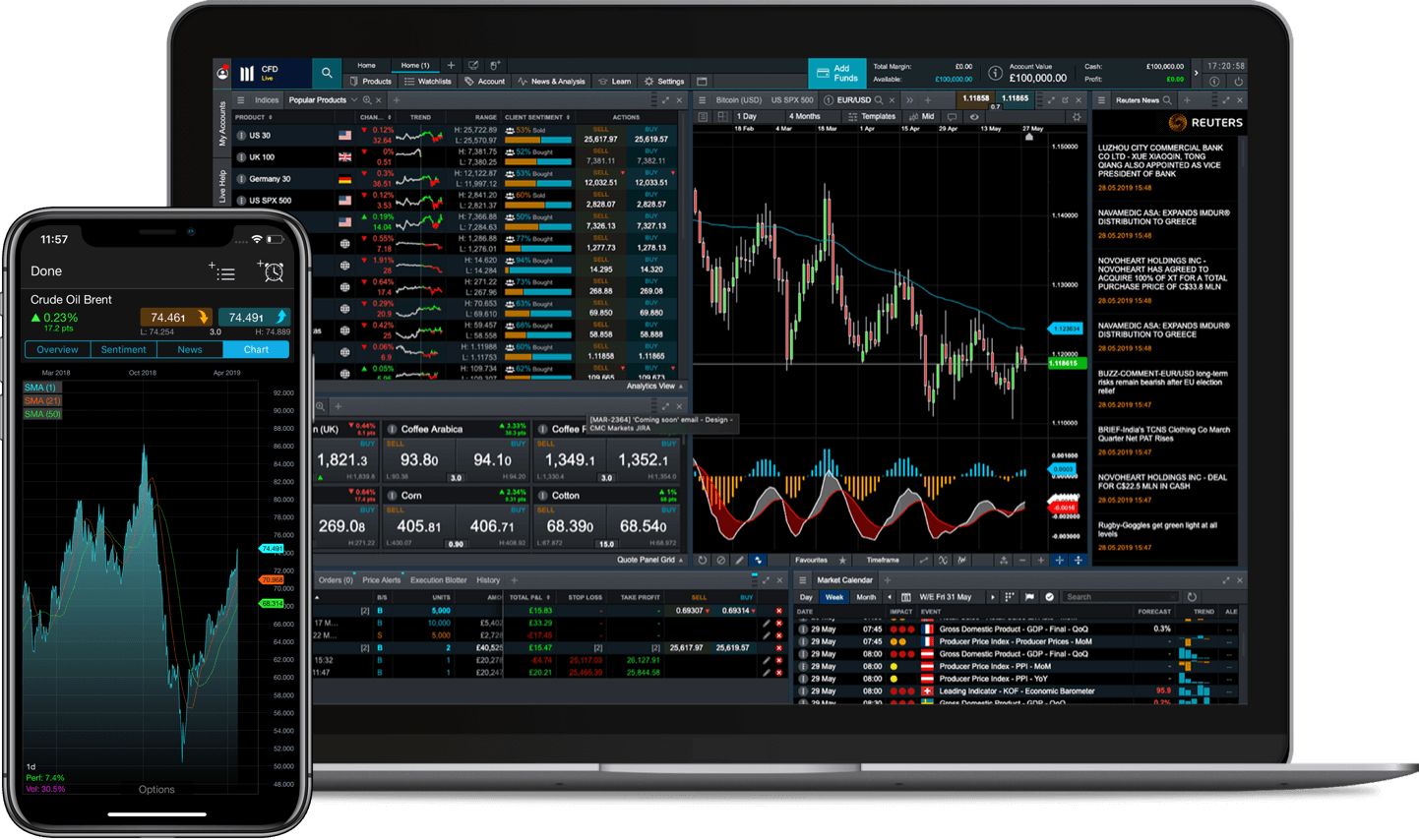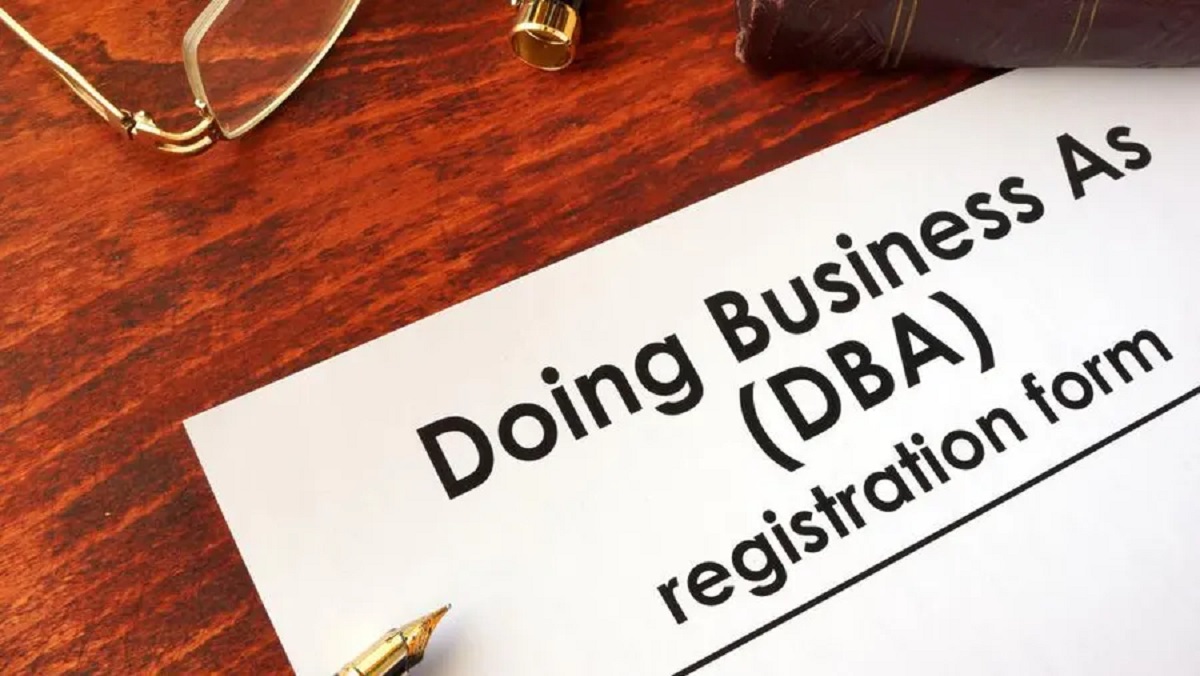Why Open a Trading Account?
Opening a trading account offers individuals the opportunity to participate in the financial markets and potentially generate profits through buying and selling various financial instruments. Whether you are an experienced investor or a newcomer to the world of trading, there are several compelling reasons to open a trading account:
- Investment Opportunities: Opening a trading account grants you access to a wide range of investment opportunities. You can trade stocks, bonds, commodities, currencies, and more. This allows you to diversify your portfolio and potentially increase your chances of making profitable trades.
- Financial Independence: By opening a trading account, you can take control of your financial future. Instead of solely relying on traditional investment methods or relying on others to manage your funds, a trading account empowers you to make your own investment decisions and potentially achieve financial independence.
- Flexibility and Convenience: Trading accounts provide unparalleled flexibility and convenience. You can trade from the comfort of your own home or on-the-go using a trading platform provided by your chosen broker. This allows you to take advantage of market opportunities and adapt to changing market conditions in real-time.
- Educational Opportunities: Opening a trading account also presents excellent learning opportunities. As you engage in actual trades, you can gain practical knowledge and insights into the financial markets. Many brokers also provide educational resources, research materials, and analysis tools to further enhance your trading skills.
- Potential for Profit: Of course, one of the primary reasons people open trading accounts is the potential for profit. By effectively analyzing and predicting market trends, you can buy securities at lower prices and sell them at higher prices, thereby earning a profit on your investments.
These are just a few of the many reasons why opening a trading account can be a beneficial step towards achieving your financial goals. It is essential, however, to choose the right trading account and broker to ensure a seamless and secure trading experience. In the following sections, we will delve into the process of selecting the right trading account and how to effectively open and manage it.
Choosing the Right Trading Account
Choosing the right trading account is crucial for a successful and rewarding trading experience. With numerous brokers and account options available, it’s essential to consider various factors before making a decision. Here are some key considerations when choosing a trading account:
- Regulation and Safety: Ensure that the broker offering the trading account is regulated by a reputable financial authority. Regulation helps protect your funds and ensures fair trading practices. Additionally, look for brokers who provide secure systems and robust cybersecurity measures to safeguard your personal and financial information.
- Account Types: Assess the different account types provided by brokers. Some offer standard accounts, while others have specific accounts for beginners or advanced traders. Consider your trading goals, experience level, and investment amount to choose an account type that aligns with your needs.
- Trading Instruments: Research the range of trading instruments available through the trading account. Ensure that it includes the asset classes you are interested in trading, such as stocks, forex, commodities, or cryptocurrencies. Having access to a diverse range of instruments allows for greater opportunity and flexibility in your trading strategies.
- Trading Platform: Evaluate the trading platform provided by the broker. A user-friendly and reliable platform is essential for seamless trading execution. Look for features like real-time market data, charting tools, order types, and customization options. A demo account can help you test the platform and ensure it meets your requirements.
- Costs and Fees: Consider the costs and fees associated with the trading account. These may include commissions, spreads, overnight fees, withdrawal fees, and account maintenance charges. Compare these costs among different brokers to find an account with competitive and transparent pricing.
- Customer Support: Check the quality and availability of customer support provided by the broker. Quick and effective customer service is essential for resolving any trading-related issues or technical difficulties that may arise.
- Educational Resources: Look for brokers that offer educational resources and tools to enhance your trading knowledge and skills. These can include webinars, video tutorials, blogs, and market analysis. Having access to educational materials can support your growth as a trader.
By considering these factors and conducting thorough research, you can select a trading account that aligns with your trading style, goals, and preferences. Remember, it’s vital to assess multiple options before making a decision. In the next section, we will explore the process of researching and comparing brokers to make an informed choice.
Researching and Comparing Brokers
When it comes to opening a trading account, researching and comparing brokers is a crucial step in the process. Choosing the right broker can significantly impact your trading experience and overall success. Here are some key steps to help you effectively research and compare brokers:
- Regulation and Reputation: Start by evaluating the regulatory status and reputation of potential brokers. Look for brokers that are regulated by reputable financial authorities, as they are bound to follow strict guidelines and maintain transparency. Additionally, research their reputation by reading reviews, checking industry forums, and seeking recommendations from experienced traders.
- Trading Costs: Compare the trading costs offered by different brokers. This includes considering factors such as spreads, commissions, overnight fees, and any other applicable charges. Lower trading costs can significantly impact your profitability over time, so it’s important to find a broker with competitive and transparent pricing.
- Trading Platform: Assess the trading platforms offered by brokers. A user-friendly and feature-rich platform can greatly enhance your trading experience. Look for a platform that provides real-time market data, efficient order execution, advanced charting tools, and customization options. Demo accounts can be helpful in evaluating the platform’s usability and functionality.
- Product Range: Consider the range of financial instruments available for trading. Ensure that brokers offer the specific asset classes you are interested in, such as stocks, forex, commodities, or cryptocurrencies. A diverse range of products allows you to diversify your portfolio and take advantage of various market opportunities.
- Customer Support: Evaluate the quality and availability of customer support provided by brokers. Prompt and knowledgeable customer service is vital, as it helps address any issues or concerns you may have during your trading journey. Look for brokers with multiple customer support channels, such as phone, email, and live chat.
- Research and Education: Consider the research and educational resources offered by brokers. Quality research materials, market analysis, and educational tools can enhance your trading knowledge and assist in making informed trading decisions. Look for brokers that provide regular market updates, webinars, tutorials, and other educational resources.
- Security and Fund Protection: Prioritize the security measures and fund protection offered by brokers. Check if they use advanced encryption technology to secure your personal and financial information. Additionally, assess if they have safeguards in place to protect client funds, such as segregated accounts and insurance coverage.
By conducting thorough research and comparing brokers based on these factors, you can make a well-informed decision on the broker that best fits your trading needs and preferences. Remember to take your time and consider multiple options before making a final choice. In the next section, we will explore the step-by-step process of opening a trading account.
Understanding the Account Opening Process
Before diving into the world of trading, it is crucial to understand the account opening process. By familiarizing yourself with the steps involved, you can ensure a smooth and hassle-free experience. Here is a general overview of the account opening process:
- Choose a Broker: Begin by selecting a broker that meets your requirements and preferences. Consider factors such as regulation, trading platforms, product offerings, and customer support. Conduct thorough research and compare different brokers to make an informed decision.
- Registration: Once you have chosen a broker, visit their website and look for a “Sign Up” or “Open an Account” button. Click on the button to initiate the registration process. You will be asked to provide personal information, including your name, contact details, and sometimes financial information.
- Account Type and Trading Platform: During the registration process, you will also be prompted to select an account type. Choose the account type that aligns with your trading goals, risk tolerance, and investment amount. Additionally, select the trading platform you wish to use. Some brokers offer multiple platforms, so make sure to choose the one that suits your needs.
- Identity Verification: Brokers are required to verify the identity of their clients for regulatory purposes. You will need to submit documents to prove your identity, such as a government-issued ID (passport, driver’s license) and proof of address (utility bill, bank statement). Follow the broker’s instructions to upload these documents securely.
- Terms and Conditions: Before completing the account opening process, carefully read and understand the broker’s terms and conditions. This document outlines important information regarding trading policies, fees, and other relevant details. Make sure you agree to the terms and conditions before proceeding.
- Account Approval: After submitting your registration and verification documents, the broker will review your application. The approval process may vary in duration, ranging from a few hours to a few days. Once your account is approved, you will receive a confirmation email or notification from the broker.
- Funding Your Account: Once your account is approved, you can proceed to fund it. Most brokers offer various deposit methods, such as bank transfers, credit/debit cards, or online payment processors. Follow the instructions provided by the broker to securely deposit funds into your trading account.
- Account Activation: After funding your account, it will be activated, and you can begin trading. Log in to the trading platform using the credentials provided by the broker. Familiarize yourself with the platform’s features and tools, and start exploring the financial instruments available for trading.
It is important to note that the account opening process may vary slightly among brokers. Some may have additional requirements or steps, while others may have a more streamlined process. Always follow the specific instructions provided by the broker during the account opening process. In the next section, we will discuss the necessary documents and information you need to gather before opening a trading account.
Gathering the Necessary Documents and Information
Before proceeding with opening a trading account, it is essential to gather the necessary documents and information required by the broker. This ensures a smooth and efficient account opening process. Here are the key documents and information you may need:
- Identification Documents: Most brokers require proof of identity to comply with regulatory requirements. Gather valid identification documents such as a passport, driver’s license, or national identification card. Ensure that the documents are valid and not expired.
- Proof of Address: Brokers also require proof of address to verify your residence. Collect documents that clearly state your name and address, such as utility bills, bank statements, or official government letters. Make sure these documents are recent (usually within the last 3 months).
- Financial Information: Some brokers may ask for financial information to assess your trading experience and investment capacity. This can include details about your employment, income, net worth, and investment objectives. Be prepared to provide accurate and truthful information to comply with regulatory standards.
- Bank Account Details: You will need your bank account details to fund your trading account and facilitate withdrawals. Gather information such as your bank account number, bank name, and routing number. Make sure the account you provide is in your name or an authorized joint account.
- Tax Information: Depending on your jurisdiction, brokers may require tax-related information. This can include your tax identification number, social security number, or any other relevant tax documentation. Make sure to have these details readily available.
- Employment or Income Proof: In some cases, brokers may ask for employment or income proof. This can include recent pay stubs, employment contracts, or tax return documents. Prepare these documents if they are requested during the account opening process.
- Additional Documentation: Keep in mind that certain brokers or regulatory authorities may have specific documentation requirements. It is advisable to check the broker’s website or contact their customer support for any additional documents or information that may be needed.
Ensure that all the documents you gather are valid, clear, and easy to read. Follow the broker’s instructions regarding document format (e.g., file types, file size limitations) when submitting them for verification.
By gathering the necessary documents and information in advance, you can expedite the account opening process and minimize any potential delays. In the next section, we will provide a step-by-step guide to opening a trading account.
Step-by-Step Guide to Opening a Trading Account
Opening a trading account can be a straightforward process if you follow the necessary steps. Here is a step-by-step guide to help you successfully open a trading account:
- Research and Select a Broker: Begin by researching different brokers and comparing their offerings. Consider factors such as regulation, account types, trading platforms, and fees. Choose a broker that aligns with your trading preferences and requirements.
- Visit the Broker’s Website: Once you have chosen a broker, visit their official website. Look for a prominent “Open an Account” or “Sign Up” button to initiate the account opening process.
- Provide Personal Information: Fill out the necessary account registration form. Typically, you will need to provide personal details such as your name, email address, phone number, and country of residence.
- Select Account Type: Choose the account type that suits your trading goals and experience level. Brokers usually offer different account options, such as standard accounts, mini accounts, or accounts for specific trading strategies.
- Complete Verification: Follow the broker’s instructions to verify your identity and address. This may involve providing identification documents, proof of address, and sometimes financial information. Submit the required documents securely through the broker’s designated channels.
- Read and Agree to Terms and Conditions: Carefully read the broker’s terms and conditions. Ensure that you understand the trading policies, fees, and any other important information. If you agree to the terms and conditions, proceed with the account opening process.
- Wait for Account Approval: After submitting your application and supporting documents, the broker will review your information. The approval process duration can vary, ranging from a few hours to a couple of days. You will receive a confirmation email or notification once your account is approved.
- Fund Your Account: Once your account is approved, you can proceed to fund it. Select a deposit method offered by the broker, such as bank transfer, credit/debit card, or online payment processor. Follow the instructions provided by the broker to securely deposit funds into your trading account.
- Explore the Trading Platform: After funding your account, you can log in to the trading platform provided by the broker. Take the time to familiarize yourself with the platform’s features, navigation, and order execution process. This will help you make informed trading decisions.
It’s important to note that the specific steps and requirements may vary among brokers. Always refer to the broker’s website or contact their customer support if you have any questions or need clarification during the account opening process.
Congratulations! You have successfully opened a trading account. In the next sections, we will delve into account security measures, funding your account, and exploring trading platform features to help you make the most of your trading experience.
Setting Up Account Security Measures
Ensuring the security of your trading account is of utmost importance to safeguard your funds and personal information. By implementing robust security measures, you can minimize the risk of unauthorized access and potential financial losses. Here are some key steps to help you set up account security measures:
- Create a Strong Password: Start by creating a strong and unique password for your trading account. Use a combination of letters (both uppercase and lowercase), numbers, and special characters. Avoid using easily guessable passwords, such as birthdays or common phrases.
- Enable Two-Factor Authentication (2FA): Two-factor authentication adds an extra layer of security to your account. Enable 2FA, if offered by your broker, to require a second verification step, such as a unique code sent to your mobile device, in addition to your password.
- Keep Software and Security Patches Updated: Regularly update the trading platform and any related software provided by your broker. Software updates often include security patches that address known vulnerabilities. Staying up-to-date reduces the risk of exploitation by malicious actors.
- Be Wary of Phishing Attempts: Be vigilant and cautious of phishing attempts. Cybercriminals may try to trick you into revealing your account credentials or other sensitive information through deceptive emails, messages, or websites. Avoid clicking on suspicious links or providing personal information unless you are absolutely certain of their legitimacy.
- Ensure Secure Internet Connection: When accessing your trading account, make sure you are using a secure internet connection. Avoid public or unsecured Wi-Fi networks, as they can be vulnerable to eavesdropping and data theft. Consider using a virtual private network (VPN) for added security.
- Regularly Review Account Activity: Keep a close eye on your account activity. Monitor your transactions, trade history, and account balances regularly. If you notice any suspicious or unauthorized activity, contact your broker immediately.
- Be Mindful of Sharing Account Information: Never share your trading account credentials or sensitive information with anyone. Keep your password, 2FA codes, and other account details private and confidential. Brokers will never request such information via email or phone.
- Consider Account Insurance or Protection: Some brokers offer additional account insurance or protection programs that provide coverage in the event of unauthorized access or fraudulent activity. Explore these options and consider their benefits and costs.
By implementing these security measures, you can enhance the safety of your trading account and reduce the risk of unauthorized access. Remember that account security is an ongoing process, so remain vigilant and stay informed about the latest security practices. In the next section, we will discuss how to fund your trading account, an essential step before you can start trading.
Funding Your Trading Account
Before you can start trading, it is essential to fund your trading account with the necessary capital. Funding your account allows you to have the funds available for buying and selling financial instruments. Here are the key steps to consider when funding your trading account:
- Choose a Funding Method: Brokers typically offer multiple funding methods, such as bank transfers, credit/debit cards, and online payment processors. Choose the method that is most convenient and suitable for you in terms of speed, security, and any associated fees.
- Verify Account Ownership: Some brokers may require you to verify that the bank account or payment method you intend to use is in your name or an authorized account. This is done to ensure the security of your funds and prevent fraudulent activities.
- Review Funding Options: Familiarize yourself with the funding options available through your chosen broker. Some brokers may offer incentives such as deposit bonuses or reduced fees for specific funding methods. Consider these options and choose based on your preferences and financial goals.
- Follow the Funding Instructions: Once you have selected a funding method, carefully follow the specific instructions provided by your broker. They will guide you on how to initiate the transfer or deposit, including important details such as account numbers, beneficiary names, or payment references.
- Consider Transaction Time and Costs: Take into account the transaction time and potential costs associated with the funding method you choose. Bank transfers may take longer to process compared to credit/debit card transactions or online payment processors. Be aware of any fees that may apply and plan accordingly.
- Track and Confirm Your Deposit: After initiating the deposit, keep track of the transaction and ensure that it reflects in your trading account. Confirm with your broker if there are any further steps required to complete the funding process, such as notifying them of the deposit or providing additional information.
- Monitor Account Balance: Once the funds are successfully deposited into your trading account, monitor your account balance to ensure accuracy. This will give you a clear view of your available funds for trading and will help you manage your positions effectively.
- Withdrawal Considerations: If you anticipate the need to withdraw funds from your trading account, familiarize yourself with the broker’s withdrawal policies and procedures. Understand any requirements or potential fees associated with withdrawals to avoid any surprises or delays in the future.
Remember to always follow the funding instructions provided by your broker and keep track of your transactions for reference. If you encounter any issues or have questions during the funding process, reach out to your broker’s customer support for assistance. With your trading account funded, you are now ready to explore the trading platform features and embark on your trading journey.
Exploring Trading Platform Features
Once you have funded your trading account, it’s time to explore the various features and tools offered by the trading platform. Familiarizing yourself with the platform’s functionality will enable you to navigate the markets efficiently and execute trades effectively. Here are some key trading platform features to explore:
- Real-time Market Data: Take advantage of real-time market data provided by the trading platform. Stay updated with live price quotes, charts, and market news. This information is essential for making informed trading decisions and identifying potential trading opportunities.
- Charting Tools: Utilize the charting tools available on the trading platform to analyze price movements and trends. Customizable charting features, technical indicators, and drawing tools can assist in identifying entry and exit points for trades.
- Order Types: Understand the different order types offered by the platform, such as market orders, limit orders, stop orders, and more. Each order type has its own purpose, so learn how to use them effectively to execute trades according to your trading strategy.
- Trade Execution: Explore the trading platform’s trade execution process. Practice placing trades, modifying orders, and closing positions in a risk-free demo account to get comfortable with the platform’s interface and order execution speed.
- Risk Management Tools: Take advantage of risk management tools provided by the platform, such as stop-loss orders and take-profit orders. These tools help you manage your risk and protect your trading capital by automatically closing positions at specific price levels.
- Account History and Statements: Access your account history and statements on the trading platform. Review past trades, transaction details, and account activity to track your performance and gain insights into your trading behavior.
- Mobile Trading: If the trading platform offers a mobile application, explore its features and functionality. Mobile trading allows you to access the markets on-the-go, monitor your positions, and place trades from your smartphone or tablet.
- Educational Resources: Explore educational resources provided by the trading platform, such as tutorials, webinars, and articles. These resources can enhance your trading knowledge and provide insights into advanced trading strategies and techniques.
- Customer Support: Familiarize yourself with the customer support options available on the trading platform. Understand how to reach out to customer support in case of any technical issues, trading inquiries, or account-related questions.
By taking the time to explore and understand these trading platform features, you can maximize your trading experience and make informed decisions. Start by familiarizing yourself with the basics and gradually delve into more advanced features as you gain experience and confidence in your trading abilities. Remember that practice and continuous learning are key to mastering the trading platform and improving your trading skills.
In the next section, we will provide tips for effective trading account management to help you stay organized and make the most of your trading journey.
Managing and Monitoring Your Trading Account
Managing and monitoring your trading account is crucial for successful and informed trading. By actively monitoring your account and implementing effective management strategies, you can optimize your trading performance and minimize potential risks. Here are some key tips for effectively managing and monitoring your trading account:
- Establish Trading Goals: Define your trading goals and develop a trading plan. Set realistic expectations and align your trading strategies accordingly. Regularly assess and adjust your goals as needed to stay focused and motivated.
- Keep Track of Account Balance: Monitor your account balance regularly to have a clear view of your available funds for trading. This will help you manage risk and make informed decisions to avoid overexposure or excessive losses.
- Maintain Trading Discipline: Stick to your trading plan and avoid making impulsive or emotion-driven decisions. Have a set of trading rules and strategies that you follow consistently. Discipline is key to long-term success in trading.
- Review Trade History: Regularly review your trade history to analyze your past trades and identify patterns or areas for improvement. Assess the effectiveness of your trading strategies and adjust your approach when necessary.
- Implement Risk Management: Prioritize risk management in your trading activities. Use appropriate position sizing, set stop-loss orders, and consider your risk-reward ratio before entering a trade. Protecting your trading capital should always be a top priority.
- Stay Informed: Stay updated with market news, economic events, and other factors that may affect the financial instruments you trade. Utilize the research tools and resources provided by your broker to gather insights and make informed trading decisions.
- Monitor Open Positions: Keep a close eye on your open positions. Regularly review and adjust stop-loss or take-profit levels as necessary. Consider trailing stops to lock in profits as the market moves in your favor.
- Use Trading Journals: Maintain a trading journal to record your trades, thoughts, and observations. Include details such as entry and exit points, reasons for taking the trade, and your emotional state during the trade. A trading journal can help you identify patterns and refine your trading approach.
- Address Technical and Connectivity Issues: Monitor and address any technical or connectivity issues that may impact your trading. Ensure your internet connection is stable, your trading platform is up to date, and promptly address any technical issues with the assistance of customer support if needed.
- Review and Adjust Trading Strategies: Regularly assess the performance of your trading strategies and adjust them if needed. Markets are dynamic, and what works in one situation may not work in another. Adaptability and continuous improvement are key to successful trading.
By implementing these tips and remaining diligent in managing and monitoring your trading account, you can improve your trading performance and increase your chances of success. Remember to stay disciplined, patient, and continuously strive to enhance your trading skills and knowledge.
In the next section, we will address frequently asked questions (FAQs) related to the process of opening a trading account to provide further clarity on this topic.
Tips for Successful Trading Account Management
Successful trading account management is crucial for consistent profitability and long-term success in the financial markets. Here are some essential tips to help you effectively manage your trading account:
- Set Realistic Expectations: It’s important to set realistic expectations for your trading account. Avoid the temptation of chasing quick profits and understand that trading involves both ups and downs. Develop a trading plan that aligns with your risk tolerance and financial goals.
- Practice Proper Risk Management: Implement sound risk management strategies to protect your trading capital. Use appropriate position sizing, set stop-loss orders, and avoid risking too much on any single trade. Only risk a small percentage of your account balance per trade to mitigate potential losses.
- Follow a Trading Strategy: Stick to a well-defined trading strategy and avoid impulsive trades based on emotions or market noise. Backtest your strategies, follow your rules consistently, and avoid deviating from your plan during periods of market volatility.
- Regularly Review and Analyze Your Trades: Review your past trades regularly to identify patterns and assess the effectiveness of your strategies. Keep track of your strengths, weaknesses, and any recurring mistakes. Learn from your trades and make necessary adjustments to improve your future performance.
- Embrace Continual Learning: Trading is a lifelong learning journey. Continuously educate yourself about the financial markets, trading strategies, and risk management techniques. Stay updated with relevant news and market developments. Take advantage of educational resources provided by reputable sources.
- Control Your Emotions: Emotions can often cloud judgment and lead to impulsive trading decisions. Develop emotional discipline and maintain a calm and rational approach to your trading. Avoid trading under stress, fear, or excessive excitement. Stick to your trading plan even during periods of market volatility.
- Utilize Stop-Loss Orders: Utilize stop-loss orders to protect your trades from significant losses. Set your stop-loss levels based on logical technical or fundamental analysis, and honor them. This will prevent small losses from turning into substantial ones.
- Implement Diversification: Diversify your trading portfolio to spread risk across different instruments or asset classes. Avoid putting all your eggs in one basket. Diversification can help smooth out returns and reduce the impact of any single trade or market event.
- Keep a Trading Journal: Maintain a trading journal to track your trades, including entry and exit points, reasons for taking trades, and emotions experienced during each trade. This helps you assess your performance objectively, identify patterns, and make necessary adjustments to your trading approach.
- Evaluate and Adjust: Regularly evaluate your trading performance and make adjustments as necessary. Assess your overall trading strategy, risk-reward ratios, and trade execution. Seek constructive feedback from other traders or professionals to gain different perspectives on your trading.
Successful trading account management requires discipline, patience, and continuous improvement. Implementing these tips will help you navigate the dynamic nature of the markets and build a solid foundation for consistent trading success.
Remember, trading involves risk, and there are no guarantees of profitability. Always consult with a financial professional and carefully consider your financial situation before engaging in trading activities.
In the next section, we will address frequently asked questions (FAQs) related to opening a trading account to provide further clarity on this topic.
Frequently Asked Questions (FAQs) about Trading Account Opening
Here are some frequently asked questions about opening a trading account:
- 1. What is a trading account?
- 2. Do I need any prior experience to open a trading account?
- 3. How much money do I need to open a trading account?
- 4. Is it safe to open a trading account?
- 5. How long does it take to open a trading account?
- 6. Can I open multiple trading accounts?
- 7. Can I change my account type after opening an account?
- 8. What documents are needed to open a trading account?
- 9. Can I open a trading account in a different currency?
- 10. Can I open a trading account as a minor?
A trading account is a specialized account that allows individuals to buy and sell financial instruments, such as stocks, bonds, commodities, or currencies, on various financial markets.
No, you do not need any prior experience to open a trading account. However, having a basic understanding of financial markets and trading concepts can be beneficial.
The minimum required deposit varies depending on the broker and the account type you choose. It can range from a few hundred dollars to several thousand. However, it’s important to only trade with an amount you are willing to risk and can afford to lose.
Opening a trading account with a reputable and licensed broker is generally safe. It is crucial to choose a regulated broker that adheres to strict security measures to protect your funds and personal information. Always do thorough research and select a broker with a solid reputation.
The account opening process can vary depending on the broker and the time required for verifying your identity and information. It can take anywhere from a few hours to a few days. Some brokers offer instant account approval, while others may require additional verification steps that take longer.
Yes, many brokers allow individuals to open multiple trading accounts. This can be beneficial if you want to separate different trading strategies, test new trading methods, or trade in different markets.
Some brokers allow you to change your account type after opening an account. However, it is best to check with your broker as each broker may have different policies and procedures regarding account type changes.
The documents required may vary depending on the broker and regulatory requirements. Typically, you will need identification documents (such as a passport or driver’s license), proof of address (such as a utility bill), and potentially additional financial documents or tax information.
Many brokers offer trading accounts in different currencies. This allows you to trade in a currency that is convenient for you. Keep in mind that currency conversion fees may apply when depositing or withdrawing funds.
In most jurisdictions, individuals must be of legal age (18 or older) to open a trading account. However, some brokers offer specific accounts for minors that are managed by a legal guardian or parent.
Please note that the above answers are general and may vary depending on the broker and the specific circumstances. It is always recommended to consult with the broker directly or refer to their website for accurate and up-to-date information.

























